For small and medium-sized enterprises, NVIDIA will launch the Jetson development kit, which will be sold in module form.
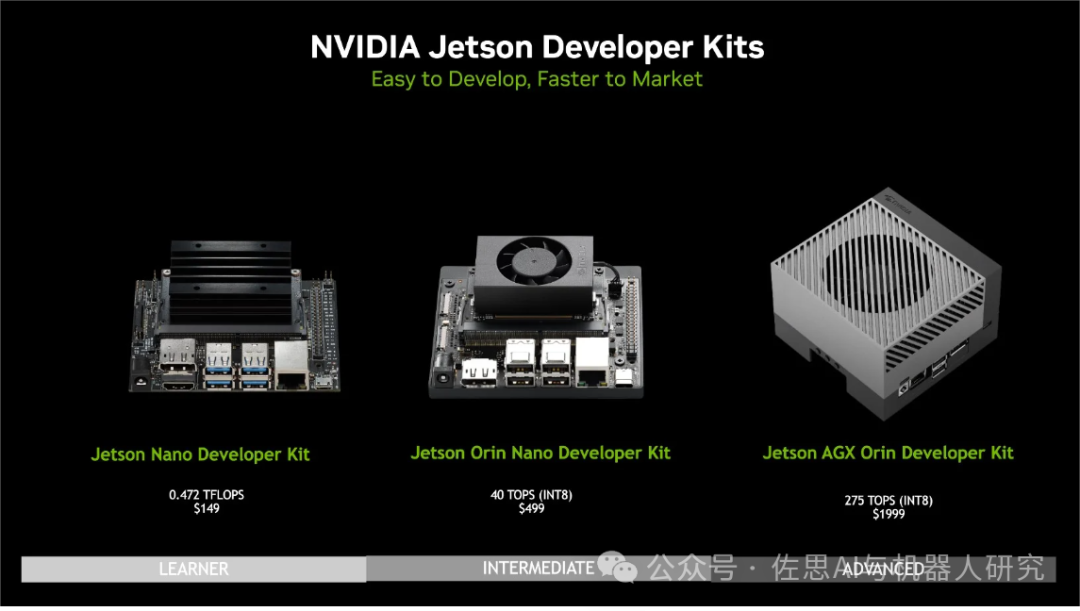
Image source: NVIDIA
Following Orin, Thor will also be released, with Jetson Thor set to launch in June 2025.
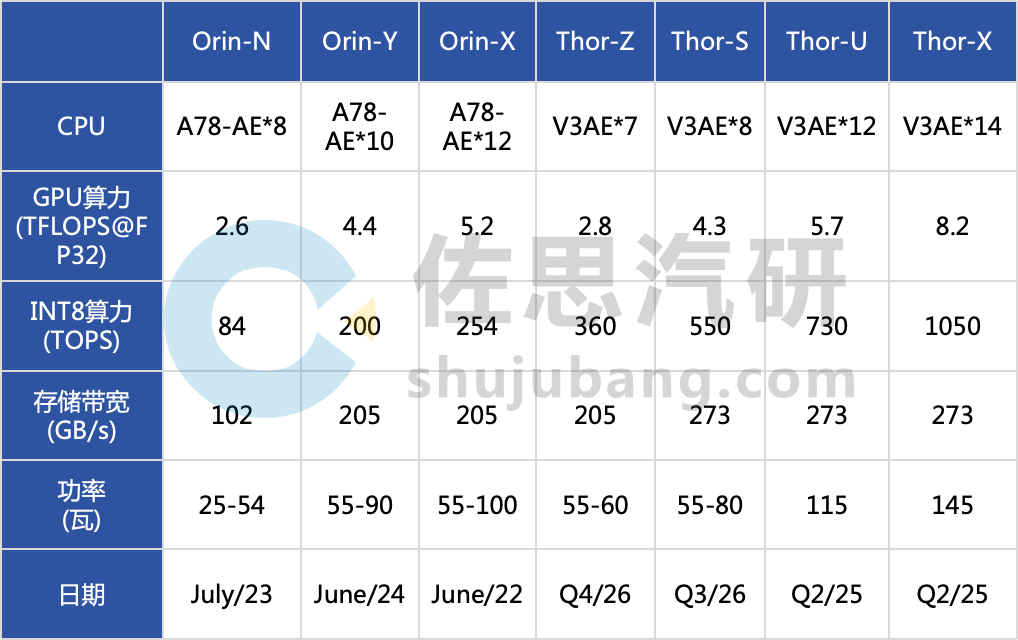
Data source: Internet, compiled by Zosi Automotive Research
Jetson Thor and Thor-X have similar performance, with a slightly lower GPU computing power of 7.8 TFLOPS@FP32, AI performance slightly lower, FP8 computing power at 1000 TOPS, and FP4 computing power at 2000 TOPS, while Thor-X is at 2100 TOPS.
Introduction to Jetson Thor
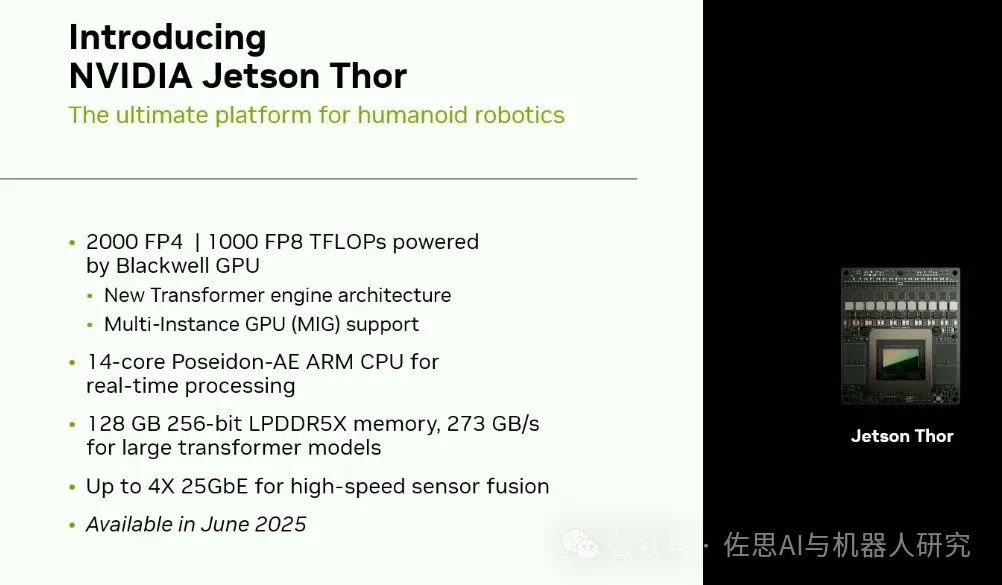
Image source: NVIDIA
Jetson Thor Architecture
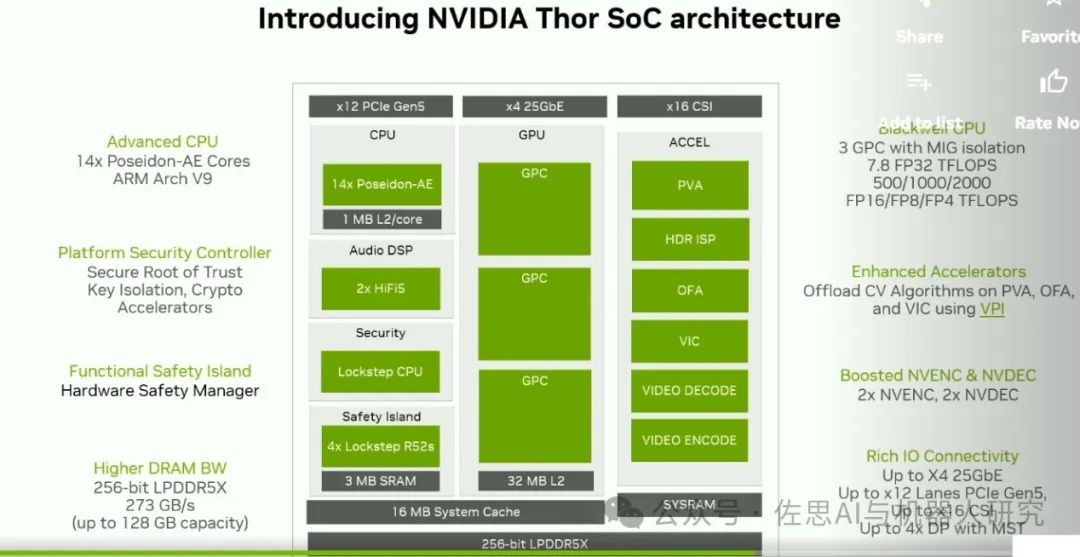
Image source: NVIDIA
The CPU is ARM’s Poseidon, specifically V3AE, where AE stands for automotive use. NVIDIA has considered cost here, with each core having an L2 cache of 1MB, while the actual V3AE supports up to 2MB. The most important decoding width metric has not been disclosed by ARM, but it is likely 8 bits. Thor is designed with cockpit applications in mind, hence it features two high-fidelity audio DSPs.
On the GPU side, it employs MIG isolation technology, with three GPCs, while Orin does not mention MIG isolation technology. MIG (Multi-Instance GPU) is a new technology introduced by NVIDIA with the Ampere architecture in 2021. This technology primarily aims to reduce power consumption, as the GPU is the largest power consumer in the SoC. Before using MIG isolation technology, all CUDA cores of the GPU worked together, but many applications do not require all CUDA cores to work simultaneously, leading to high power consumption.
The previous solution was virtual GPU, or vGPU, which is a virtual GPU software introduced by NVIDIA that supports creating many small virtual GPUs on a single physical GPU and allows these virtual GPUs to be used by different users. However, this method is based on a time-slicing manager to control the task’s access to the physical GPU device engine; the time-sliced vGPU essentially still allows tasks to share the physical device (engine), controlling the resource usage of the entire physical device by changing how much time slice each virtual GPU uses. While this method can meet some application scenarios, the resources on the physical card are shared, and all tasks must take turns, making it difficult to achieve good QoS in terms of computing power/bandwidth/task switching.
The basic method (principle) of MIG is to complete resource partitioning and combination, i.e., partitioning the available physical resources on the physical card, including: system channels, control buses, computing units (TPC), global memory, L2 cache, data buses, etc.; then recombining the partitioned resources so that each sub-GPU can achieve data protection, fault isolation, and stable service. The average power consumption of Thor is expected to be slightly lower than Orin or roughly the same.
Orin Framework Diagram
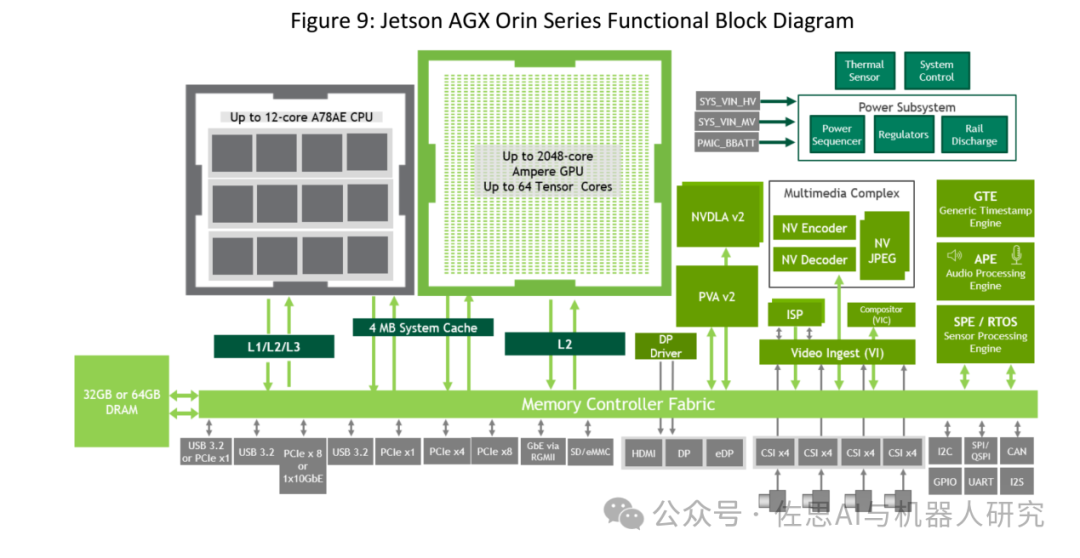
Image source: NVIDIA
From NVIDIA’s diagram, the biggest difference between Thor and Orin is that Thor has removed the NVDLA, which is the deep learning accelerator. Here, it is important to explain the basic knowledge of NPU, which is a deep learning accelerator. There are two common design patterns for NPUs: the first is an instruction set accelerator with an instruction set, similar to DSP/CPU designs, using a specially designed NN/Matrix acceleration instruction set combined with compact memory, or directly extending acceleration units in the pipeline to become part of the pipeline. The advantage of this design is logical flexibility and software friendliness. The second is hardware logic (bus accelerator type), for example, convolution operator acceleration, which would actually design a convolution circuit and use bus-configured registers to drive it to work. The implementation idea of the NVDLA neural network acceleration unit belongs to the latter, as it can only perform one task, which is convolution operations. The AGX top-spec Orin’s NVDLA has a computing power of 87 TOPS at 8-bit integer precision.
Convolution Acceleration Classification

Image source: Internet
We are now in the Transformer era, and convolution, which was used in the CNN era, is only utilized for BEV feature extraction, consuming only about 1/5 of the total computing power demand. Therefore, NVIDIA may have removed the NVDLA.
Jetson Thor Development Kit
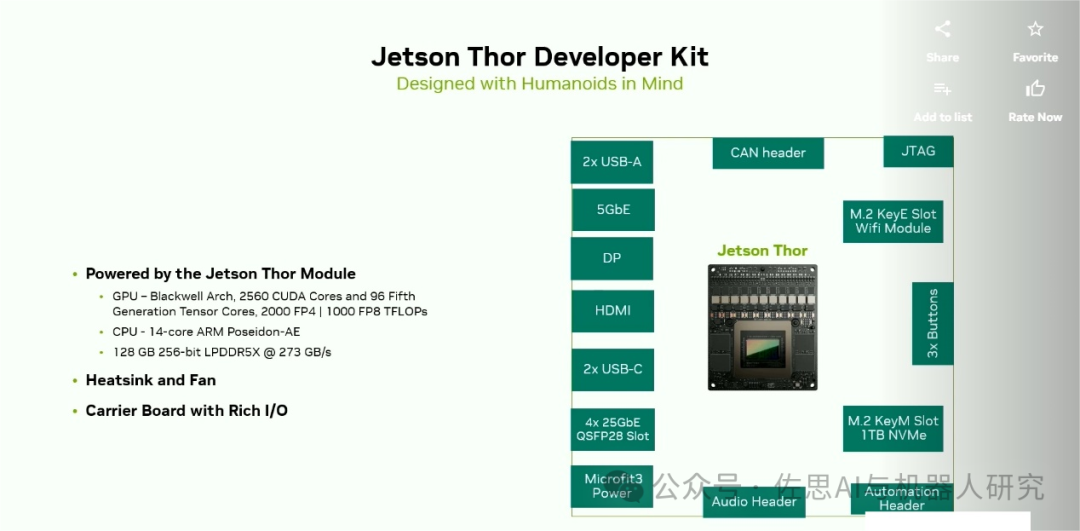
Image source: NVIDIA
Thor has 2560 CUDA cores, while Orin has 2048, with 96 fifth-generation tensor cores compared to Orin’s 64 third-generation tensor cores. Storage bandwidth is relatively costly, and since it is still a CPU+GPU single lithography design (chiplet costs are too high), unified memory cannot be used, so the storage bandwidth has only slightly improved to 273 GB/s, while Orin is at 204.8 GB/s, with no actual improvement, mainly due to the LPDDR5X’s maximum frequency increase to 10667 MHz. NVIDIA is not Tesla and is very concerned about costs, so this storage bandwidth is far lower than Tesla’s GDDR6.
The power consumption of Jetson Thor is 120 watts, slightly lower than Thor-X’s 140 watts.
Holoscan Sensor Bridge
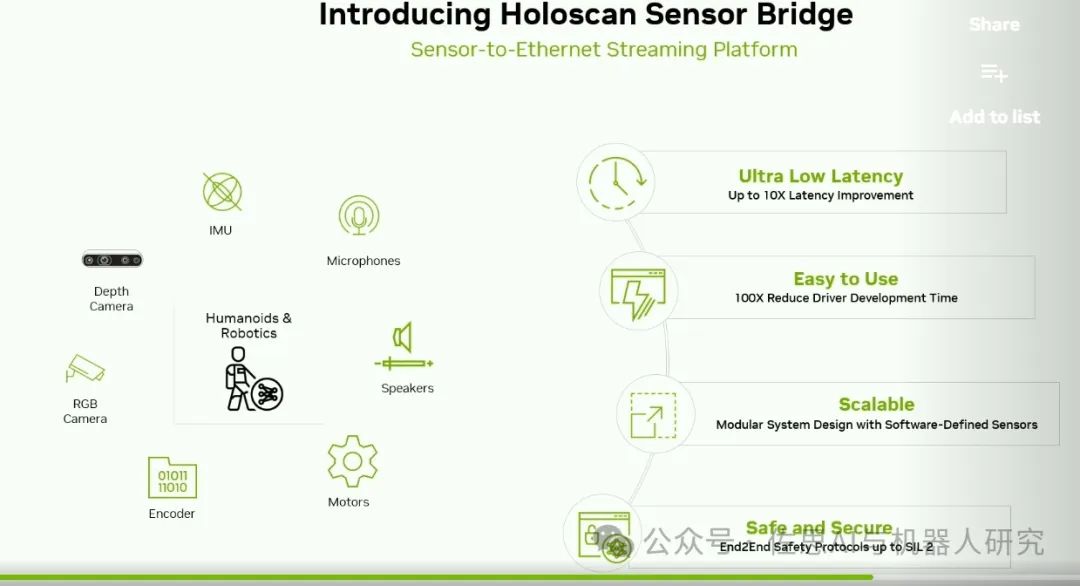
Image source: NVIDIA
The Holoscan sensor bridge is a sensor-to-Ethernet platform designed by NVIDIA specifically for humanoid robots.
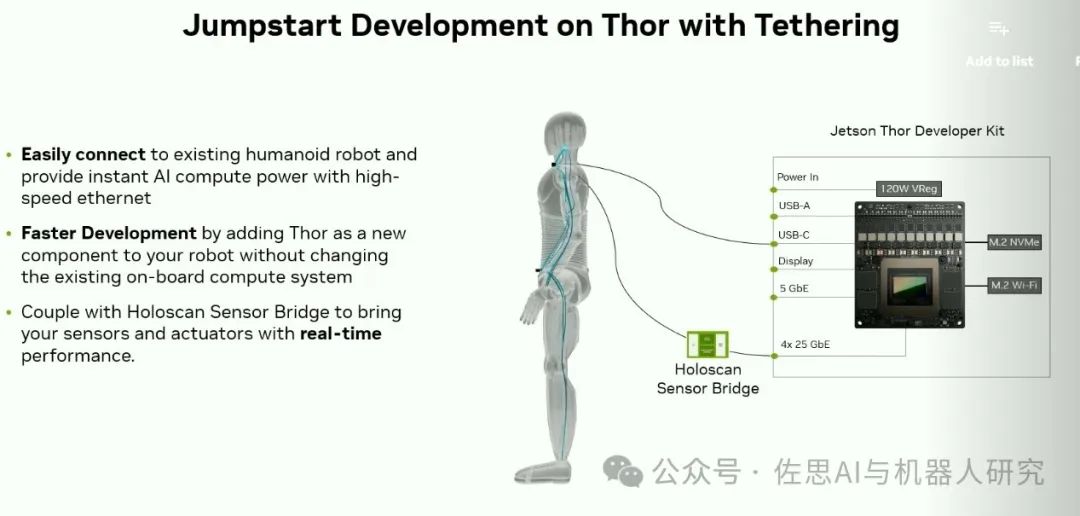
Image source: NVIDIA
The Holoscan sensor bridge supports industrial Ethernet transmission speeds of up to 25Gb, providing good real-time performance, with the highest requirement for robot sensors being 1000Hz.
Holoscan Sensor Bridge Image
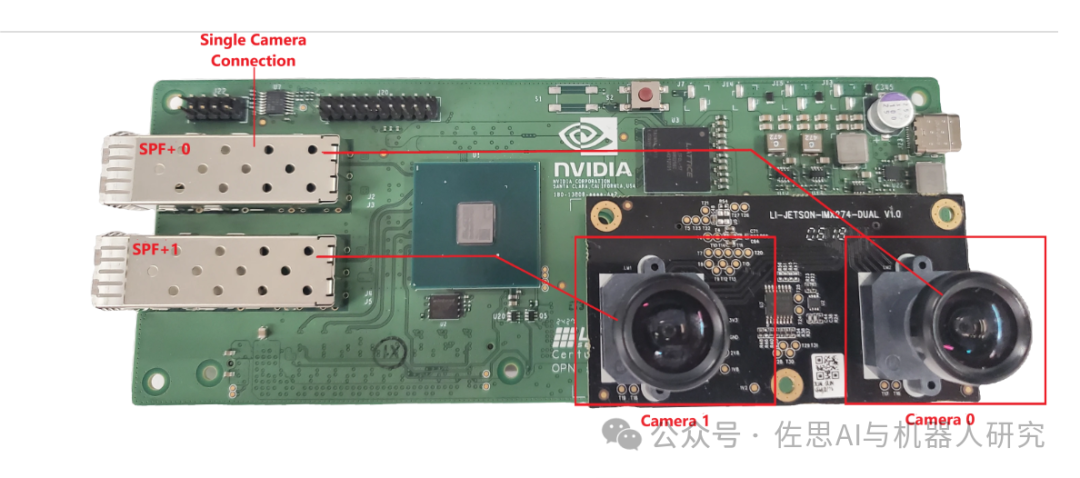
Image source: NVIDIA
The current public version supports two Sony IMX247 cameras, each with 8 million pixels. The Holoscan sensor bridge is developed in collaboration with Lattice, using FPGA to receive MIPI CSI format and output industrial Ethernet format. NVIDIA recommends using the Connect-X7 NIC, which supports Ethernet speeds of up to 400Gb.
Holoscan Schematic Diagram

Image source: Lattice
As shown above, it supports AGX Orin and industrial IGX.
Holoscan Framework Diagram
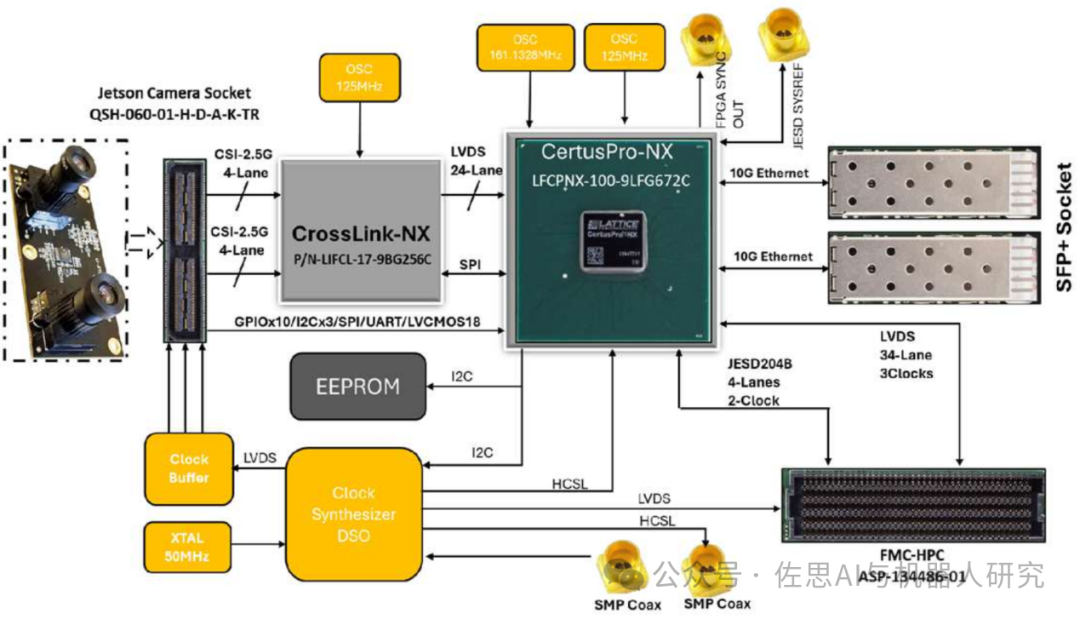
Image source: Lattice
At CES 2025, NVIDIA and MediaTek jointly launched the GB10 system, also known as AI PC.
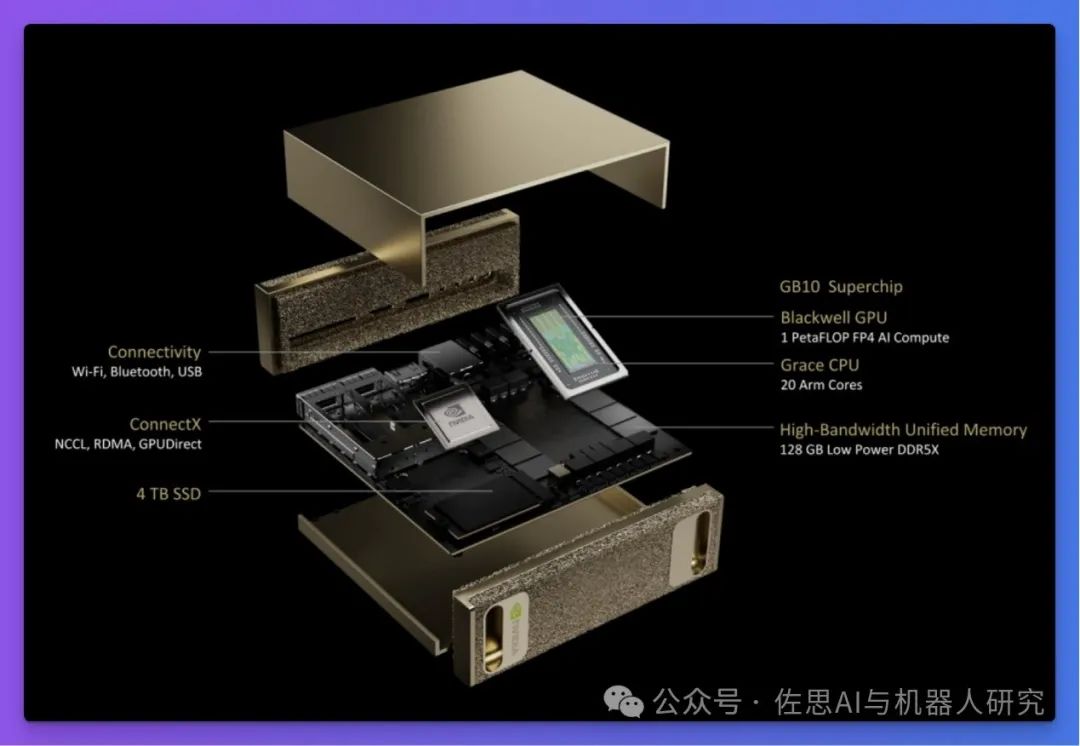
GB10 is quite similar to Thor, but with half the computing power and significantly lower power consumption. It has a volume of only 1.1 liters and weighs just 1.2 kilograms, with the 4TB version priced at $3999 and the 1TB version at $2999, making the 1TB version quite cost-effective.
Disassembly of NVIDIA AI PC
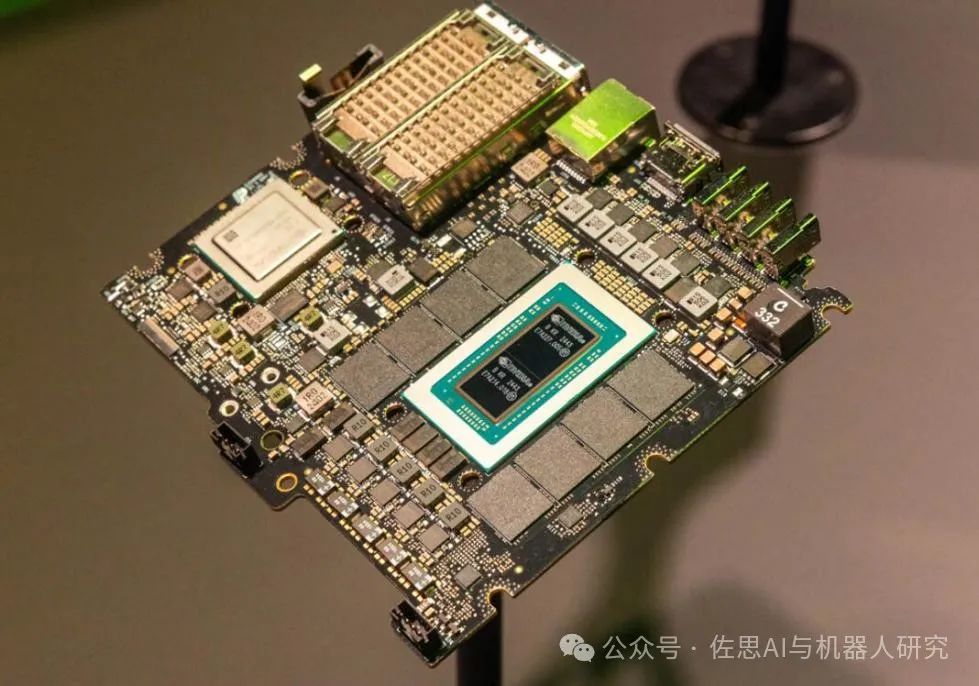
Image source: Internet
GB10 Close-up
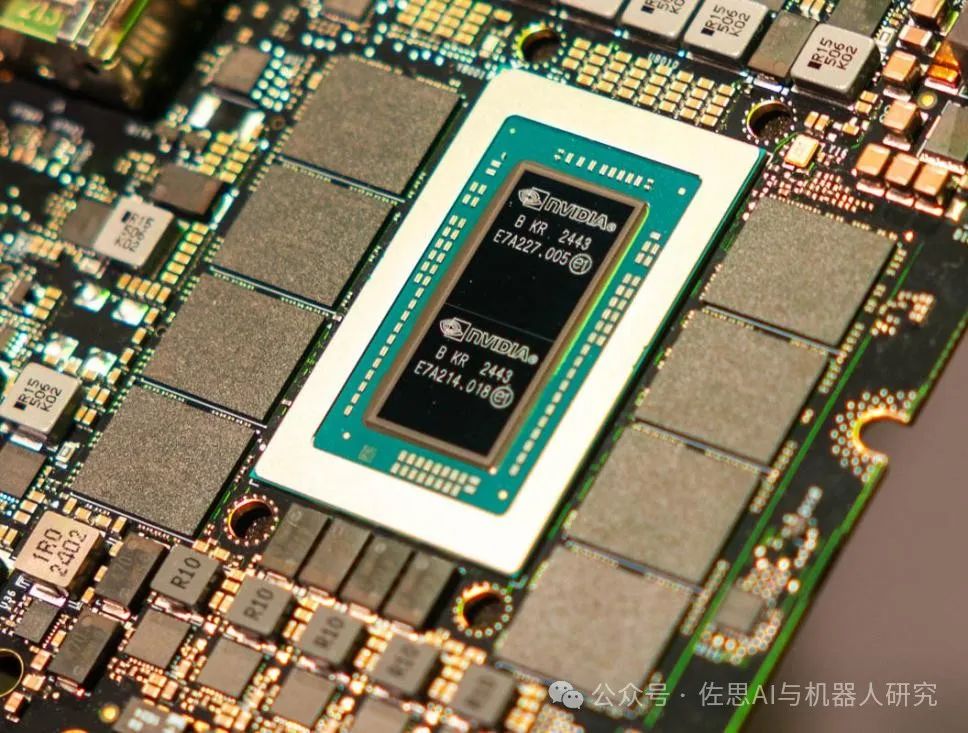
Image source: Internet
The CPU part of GB10 is provided by MediaTek, featuring a 20-core design, with 10 high-performance cores being ARM’s top-tier X925, which has a 10-bit decoding width and is significantly more powerful than Thor’s V3AE. The other 10 cores are ARM’s A725, making the CPU part stronger than Thor, with AI performance being half that of Jetson, which is sufficient for most scenarios. Most importantly, the power consumption is very low, possibly requiring only air cooling or even no cooling, while Thor definitely requires liquid cooling, and some Orin models also require liquid cooling.
In fields sensitive to power consumption, GB10 may be better than Jetson.
Disclaimer: The views and data in this article are for reference only and may differ from actual situations. This article does not constitute investment advice, and all views and data represent the author’s position, without any guidance, investment, or decision-making opinions.
